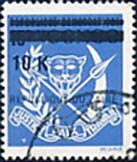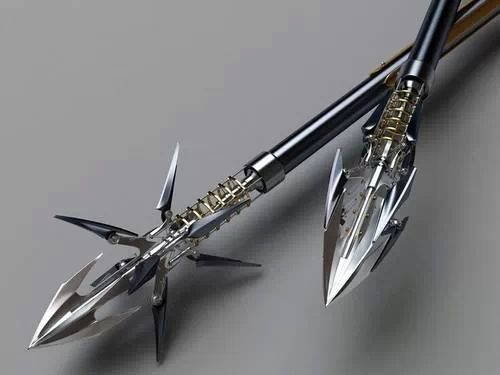Stamp: Coat of Arms type of 1972 Surcharged Black (Zaire 1977)
Coat of Arms type of 1972 Surcharged Black (Zaire 1977)
01 January (Zaire ) within release 1977 Provisionals goes into circulation Stamp Coat of Arms type of 1972 Surcharged Black face value 10 Zairean makuta
| Stamp Coat of Arms type of 1972 Surcharged Black in catalogues | |
|---|---|
| Michel: | Mi: CD 540b |
| Belgium: | Bel: CD 913a |
Stamp is square format.
No Sn codeAlso in the issue 1977 Provisionals:
- Stamp - Coat of Arms type of 1972 Surcharged Black face value 10;
- Stamp - African Red Stag Beetle (Metopodontus savagei) face value 25;
- Stamp - Coat of Arms type of 1972 Surcharged face value 1;
- Stamp - Green Vervet (Cercophitecus aethiops) face value 10;
- Stamp - Hotel Inter-Continental in Kinshasa - Surcharged in Blue face value 30;
|
Data entry completed
53%
|
|
|---|---|
| Stamp Coat of Arms type of 1972 Surcharged Black in digits | |
| Country: | Zaire |
| Date: | 1977-01-01 |
| Perforation: | 13½ |
| Emission: | Definitive |
| Format: | Stamp |
| Face Value: | 10 Zairean makuta |
Stamp Coat of Arms type of 1972 Surcharged Black it reflects the thematic directions:
An arrow is a fin-stabilized projectile launched by a bow. A typical arrow usually consists of a long, stiff, straight shaft with a weighty (and usually sharp and pointed) arrowhead attached to the front end, multiple fin-like stabilizers called fletchings mounted near the rear, and a slot at the rear end called a nock for engaging the bowstring. A container or bag carrying additional arrows for convenient reloading is called a quiver
A coat of arms is an heraldic visual design on an escutcheon (i.e. shield), surcoat, or tabard. The coat of arms on an escutcheon forms the central element of the full heraldic achievement which in its whole consists of shield, supporters, crest, and motto. A coat of arms is traditionally unique to an individual person, family (except in the United Kingdom), state, organisation or corporation.
Tusks are elongated, continuously growing front teeth that protrude well beyond the mouth of certain mammal species. They are most commonly canine teeth, as with narwhals, chevrotains, musk deer, water deer, muntjac, pigs, peccaries, hippopotamuses and walruses, or, in the case of elephants, elongated incisors. Tusks share common features such as extra-oral position, growth pattern, composition and structure, and lack of contribution to ingestion. Tusks are thought to have adapted to the extra-oral environments, like dry or aquatic or arctic.In most tusked species both the males and the females have tusks although the males' are larger. Most mammals with tusks have a pair of them growing out from either side of the mouth. Tusks are generally curved and have a smooth, continuous surface. The male narwhal's straight single helical tusk, which usually grows out from the left of the mouth, is an exception to the typical features of tusks described above. Continuous growth of tusks is enabled by formative tissues in the apical openings of the roots of the teeth


